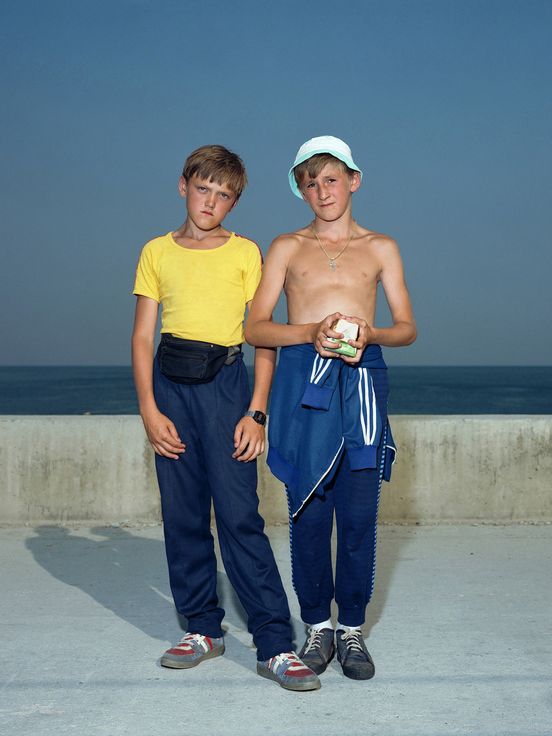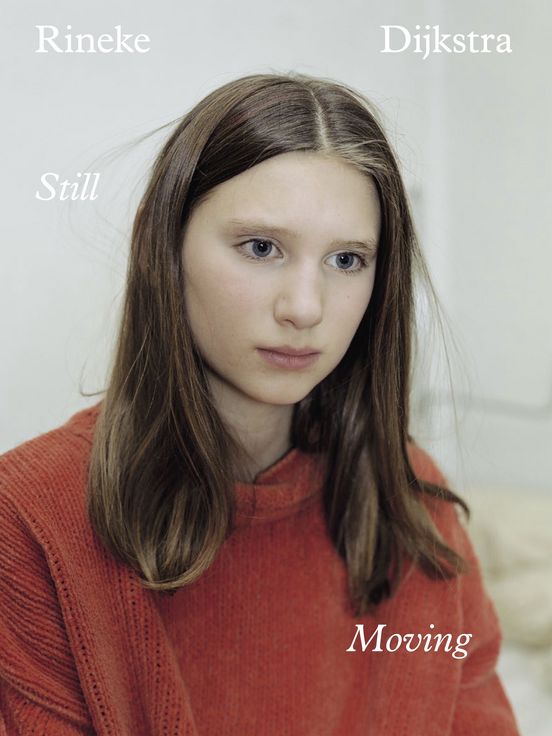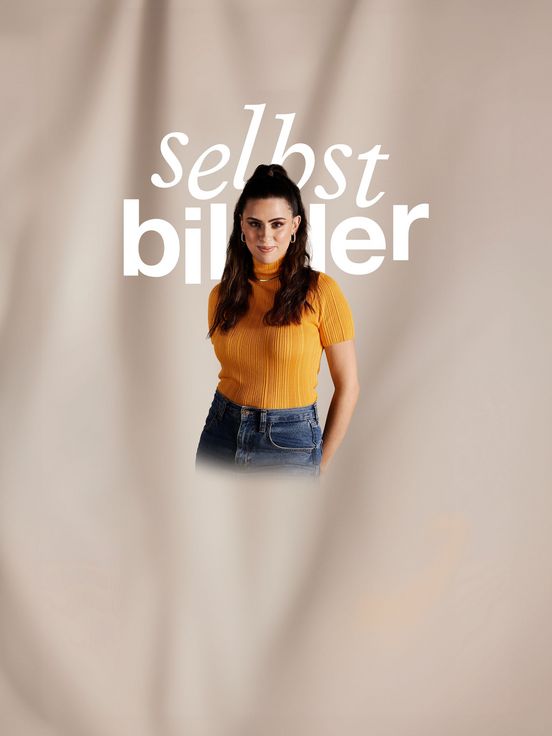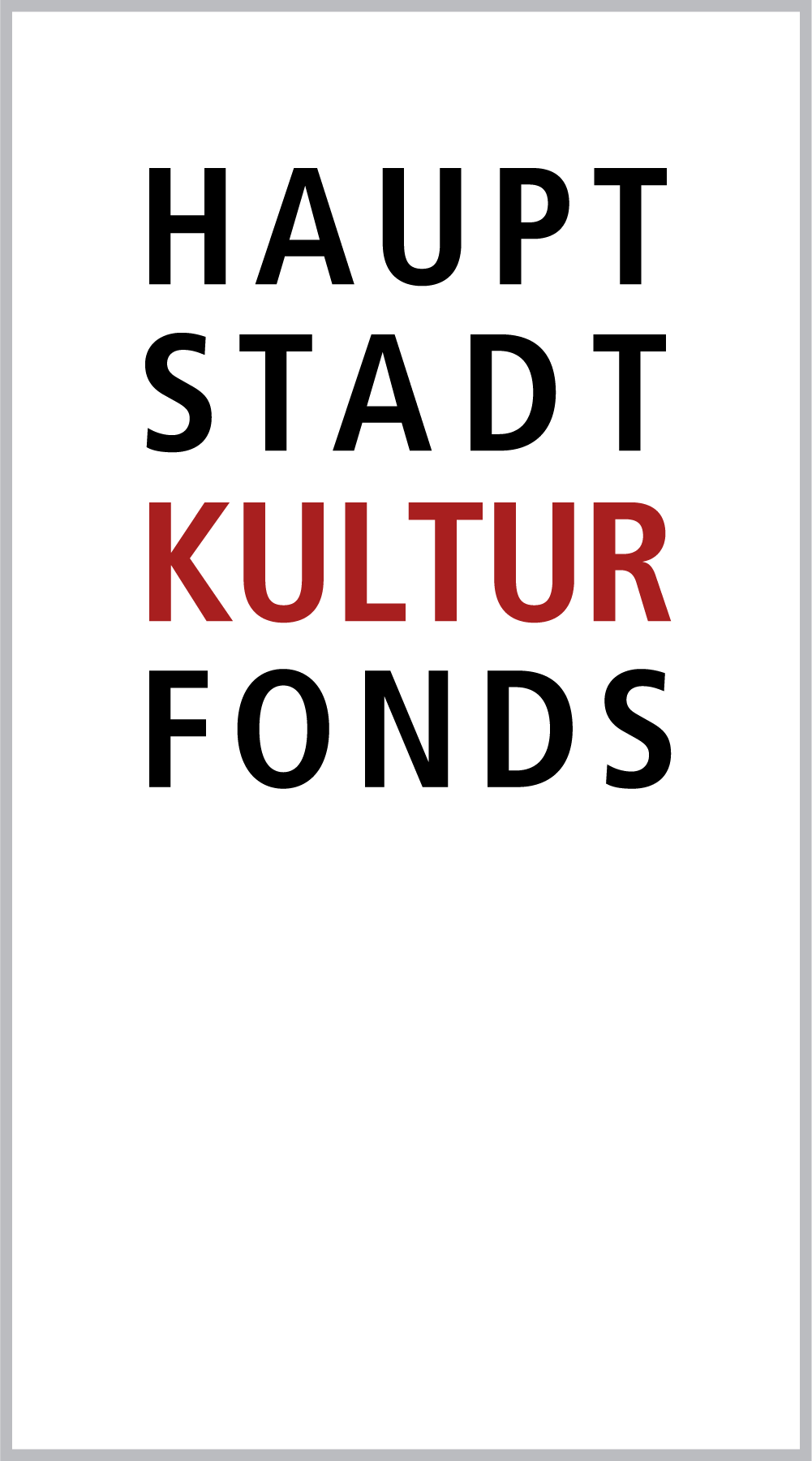Rineke Dijkstra (*1959) is one of the most highly acclaimed photography and video artists in the world. The central theme of her portraits is the depiction of identity. She is particularly interested in those stages in life and those moments when identity is taking shape: childhood, youth, but also formative events in adulthood, such as the birth of a child. This major retrospective at the Berlinische Galerie presents eight series with about 80 works dating from the early 1990s to the present day, including some photographs never yet exhibited from the artist’s own archives. Pared down to essentials, her works are visually very powerful and easily accessible to a broad public. They create a space for meditation and invite reflections about individuality, representation and personal expression.
Dijkstra uses her camera as an opportunity to explore people in depth. She approaches them carefully, slowly but surely pursuing her concept, although without ruling out spontaneous tweaks and variations. She often builds a strong connection with her subjects over a long period. This empathetic approach comes across in a particular sensitivity that is reflected in her photographs: Dijkstra’s works capture fragile moments, subtle gestures midway between a conscious pose and an unconscious attitude. She has a gift for drawing out a person’s dignity, but also their insecurities.
The artist works with a large-format 4x5” plate camera, capturing her motifs from a frontal perspective. The resulting images are exceptionally precise and faithful to detail, their composition meticulously thought through and implemented. Every exposure requires its own sheet of film, making patience, time and concentration essential for both the photographer and the subject. While these preparations are underway, the people being portrayed have a chance to relax and adjust to the unfamiliar situation.
The portraits reflect not only how we present ourselves to the world but also what it means to be documented by the media. They might even be described as studies in how people behave in front of a camera. Today, when social media are all around us, they offer an opportunity to think about the image’s claim to authenticity and about evolving strategies of (self-)presentation.
- All the explanatory exhibition texts are available in German and English.
- There is no information in Simple German.
- There is no information in German Sign Language.
- Some outreach events are held in or with German Sign Language.
- There are two unlit rooms with video works. The video works feature sound and subtitles in English. You can also download a transcription in German onto your own smart phone with a QR code.
- Assistive listening is not supported by induction systems or neck loops.
- There is step-free access to the exhibition.
- Most of the exhibits and explanatory texts can be seen and read from a seated position.
- There are seatings. Wheelchairs and folding stools can be borrowed free of charge from the cloakroom.
- The works in the exhibition are evenly illuminated. Most of the exhibition texts are designed with strong contrast.
- All the exhibition texts are available as a large-print brochure that you will find at the entrance to the exhibition.
- The exhibition contains no tactile floor guidance and no touch models.
Click here for information about museum accessibility.
Do you have any other questions about accessibility? Andreas Krüger, officer accessibility and inclusion, will be happy to answer them via e-mail krueger@berlinischegalerie.de or via phone +49 (0)30-789 02-832.
Trailer
Sets in the exhibition
Dijkstra’s work breaks down into sets, some of them honed over a number of years.
(1992–1998)
Soon after a cycling accident in 1991 Rineke Dijkstra took a picture of herself in a bathing costume at the Marnixbad in Amsterdam. According to the artist, this candid self portrait was the trigger for a sequence of beach portraits that has since become the best-known series in her œuvre. Beginning in the Netherlands, followed by South Carolina (USA) and then several countries in western and eastern Europe, including Poland and Ukraine, she collected shots of young people alone and in groups. The background always consists of sea and sky. Sometimes the youngsters adopt stereotypical poses, wondering where to place their feet and hands. There are no accessories apart from the beachwear. In groups the young people seem more relaxed. They touch or embrace each other, offering mutual support and stability.
Almerisa (since 1994)
Dijkstra began taking portraits of six-year-old Almerisa in 1994, building the eponymous series with a new portrait roughly every two years. The girl had fled Bosnia with her parents soon after war broke out in Yugoslavia. She caught Dijkstra’s attention while the photographer was working on a commission at a refugee hostel in the Netherlands. The series tracks how this anxious young child grows into an elegant woman, now a mother herself, who faces the camera with confidence.
Olivier (The French Foreign Legion) (2000–2003)
The process of change is similarly visible in the series about Olivier. He made his decision to join the French Foreign Legion when he was 14. Before he could fulfil his dream – applicants must be at least 17 years old – he began to prepare by training his body at night. Dijkstra launched her series on the day that Olivier joined the Legion, recording his physical and mental development from teenager to experienced soldier over the course of five years and several field operations. The work not only captures Olivier’s progress but also challenges the way that viewers project their own ideas of identity, power and masculinity onto him.
Since 2002 Rineke Dijkstra has been taking family portraits on commission, partially motivated by her own fascination with the genre. Here she focuses entirely on the children. Clues to the presence of parents can be seen in the domestic environment, the clothes and the behaviour of their offspring. Tall windows, parquet floors, designer furniture and other details indicate the privileged world in which these children are growing up and which, one day, they will presumably adopt as their own.
The group portraits also reveal subtle sibling dynamics. Some look alike, others less so, and yet they convey the sense of a bond. At the same time, each tries to stand out in their own way and to assert an individual personality. Viewers inevitably wonder what has become of them today.
New Mothers (1994)
The “New Mothers” are doubtless among the most intimate portraits of Rineke Dijkstra’s artistic career. Dijkstra took the portraits in these women’s homes. Giving birth at home, like these friends and acquaintances of the photographer, is far more common in the Netherlands than in other Western cultures. Just a few hours after delivery, each “new mother” is shown naked with a newborn on her arm. The women still bear the marks of labour and yet radiate contented happiness.
Bullfighters (1994 and 2000)
In Portuguese bullfighting the “Bullfighters”, known as “forcados”, use sheer muscular power to force the bull to the ground. Dijkstra portrays the young men immediately after their ritualised struggle – weary, their faces smeared with blood, their finely embroidered jackets dirty and torn.
(1998–2006)
The starting-point for the exhibition at the Berlinische Galerie is a series of portraits taken in the Tiergarten in 1998/1999 when Rineke Dijkstra was a DAAD Artist-in Residence in Berlin. While she was exploring the park, Dijkstra approached these children and teenagers amid deep-green summer vegetation, away from the bustle of leisure activities. These are actually urban settings, artificially designed to simulate natural woodland and meadows. And there is something uncanny about the lush green of this park with its play of light and shade. The controlled domestication of vegetation and natural features is not obvious in every photograph. Dijkstra continued this series in other urban parks, such as the Vondelpark in Amsterdam and the Parque de la Ciutadella in Barcelona.
In addition to her photography, Dijkstra has repeatedly turned to working with video, integrating photography into the production. Alongside the moving images Dijkstra creates stills, which she treats and exhibits as works in their own right.
Rineke Dijkstra’s experiments with the moving image date back to 1996/97. For “The Buzz Club, Liverpool, UK/Mystery World, Zaandam, NL 1996-97”, she approached young people in night clubs who struck her as interesting subjects. Away from parental control, the youngsters are testing themselves, wearing unorthodox clothes, gauging their sex appeal and experimenting with their bodies. They are not children any longer but are caught up in a phase of transformation and with it a time of emotional turmoil and conflict. The modern myth around youth is highly charged, with associations of self-discovery, rebellion, but also conformism.
A year before she made that video, Dijkstra had taken portraits of young people at the Buzz Club (1995). The Berlinische Galerie is showing some previously unpublished photographs from this series recently rediscovered by the artist in her archives.
Biography
Rineke Dijkstra was born in Sittard, The Netherlands in 1959. She attended the Gerrit Rietveld Academy, Amsterdam from 1981-1986. She has been honored with the Johannes Vermeer Prijs (2020), the Hasselblad Foundation International Award in Photography (2017), SPECTRUM, International Prize for Photography of Stiftung Niedersachsen (2017) and The Citibank Private Bank Photography Prize (1999). Rineke Dijkstra was recently the subject of a mid-career retrospective on view at Museum De Pont, Tilburg, the Netherlands (2018) Louisiana Museum of Modern Art, Humlebaek, Denmark (2017), the San Francisco Museum of Modern Art, and at the Solomon R. Guggenheim Museum in New York (2012). In 2013, the Museum für Moderne Kunst (MMK) Frankfurt showed the first comprehensive filmic retrospective of the Dutch artist's work worldwide.












